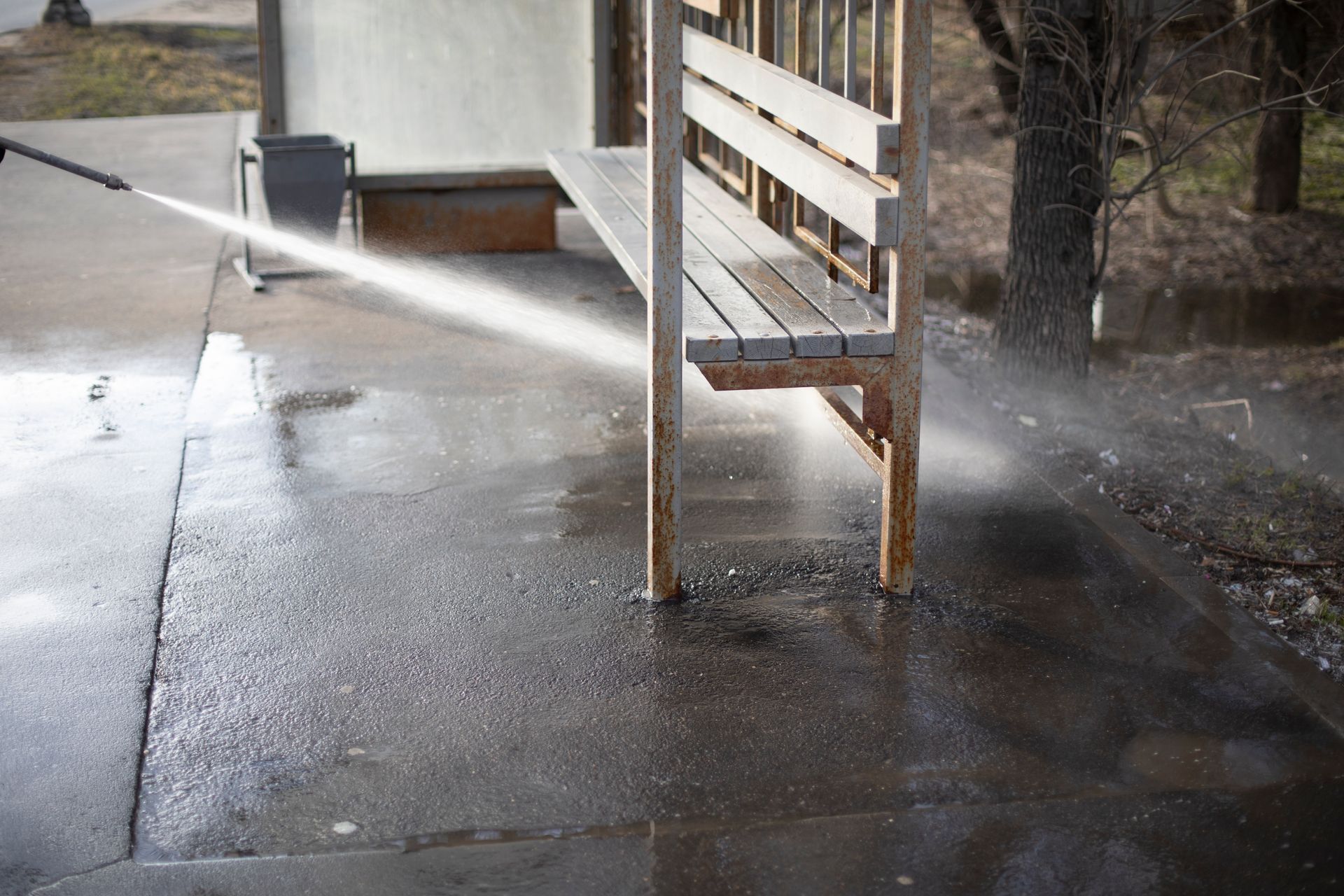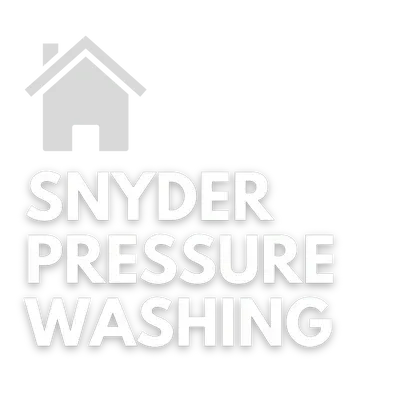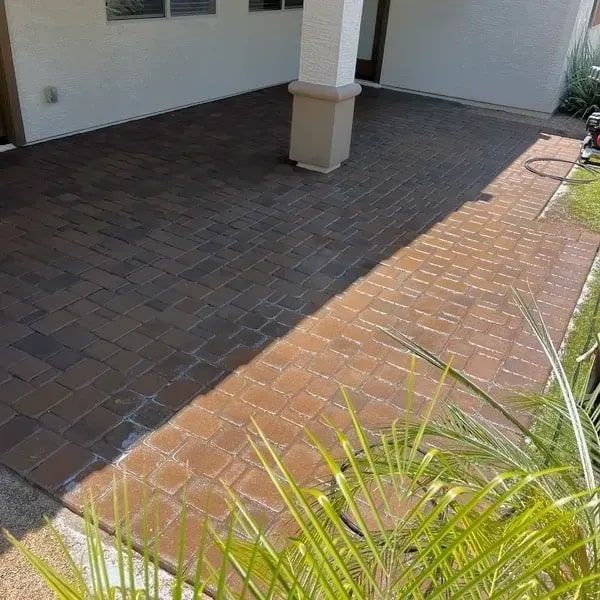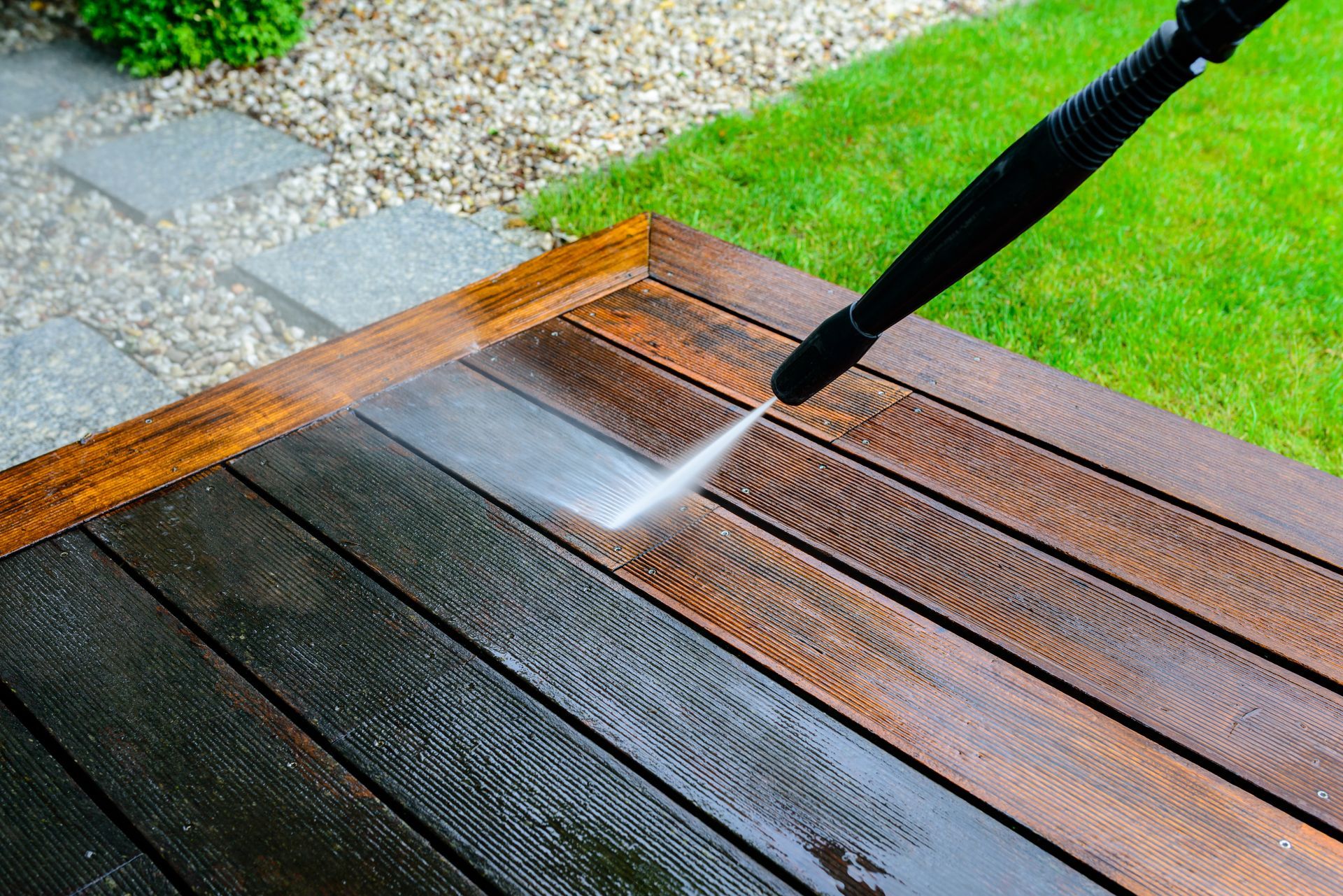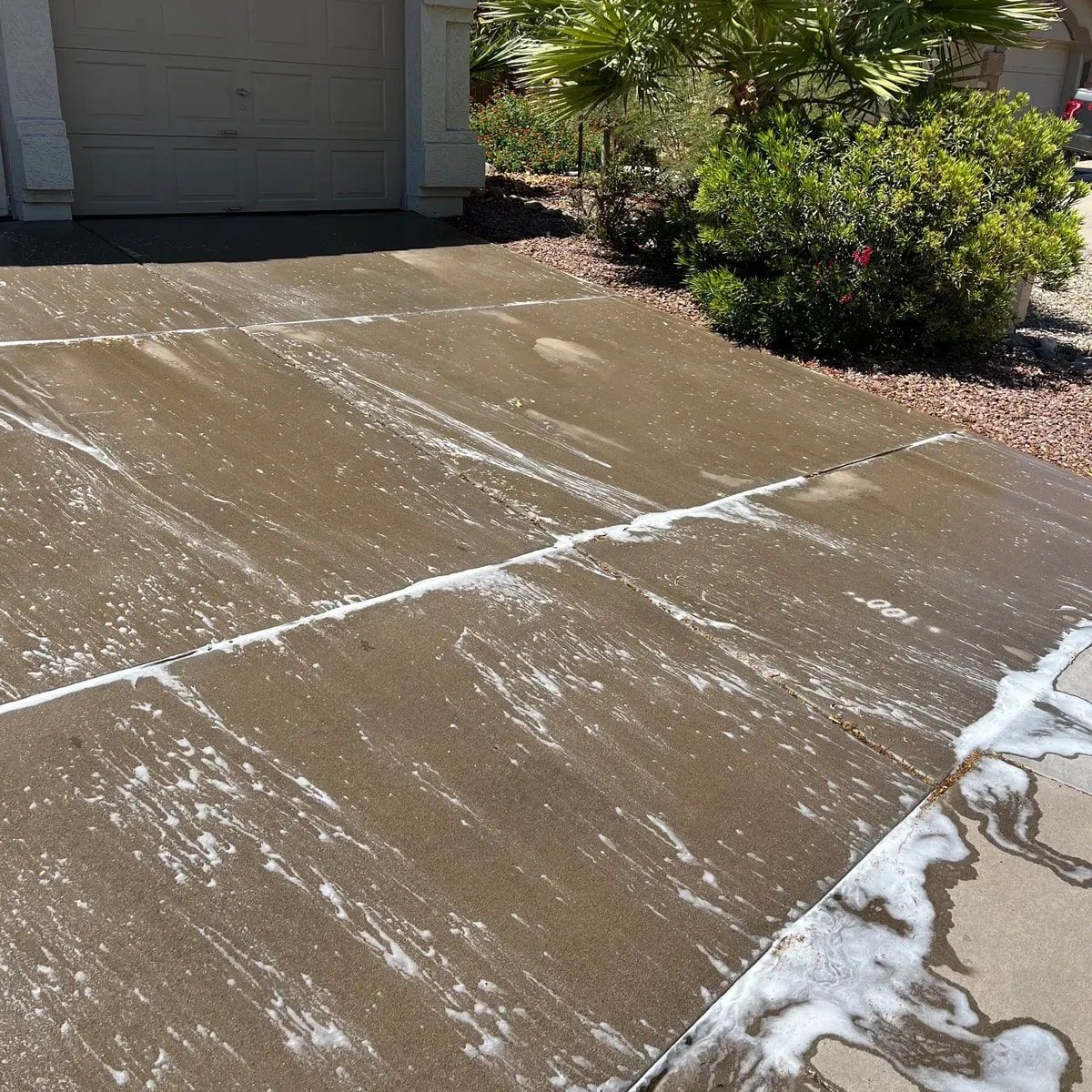Is Pressure Washing Safe for My Driveway?
Pressure washing is a fantastic way to breathe new life into your home’s exterior. However, while it can make your siding sparkle, it can also come with its fair share of risks if not approached carefully. This guide will provide homeowners with essential safety tips for pressure washing, helping you avoid accidents, injuries, and costly mistakes while transforming your home into the envy of the neighborhood.
Understanding Pressure Washing: What You Need to Know
Pressure washing, also known as power washing, utilizes high-pressure water spray to remove dirt, grime, mold, and mildew from various surfaces, including your home’s siding, driveways, patios, and more. This powerful cleaning method is effective but can also be dangerous if not handled properly.
The Risks of Pressure Washing
- Injury: The force of the water can cause serious injuries. A pressure washer can shoot water at speeds of up to 2,500 PSI (pounds per square inch), which can lead to lacerations or bruises if directed at bare skin.
- Damage to Property: Using too high a pressure setting can strip paint, gouge wood, or even break windows. Understanding the material you’re working with is crucial.
- Electrical Hazards: Water and electricity don’t mix! Pressure washing near electrical outlets or equipment can create dangerous situations.
Understanding these risks is the first step in ensuring a safe pressure washing experience. With the right precautions, you can keep your home—and yourself—safe while achieving that gleaming finish.
Essential Safety Gear: Dress for Success
When it comes to pressure washing, how you dress can make a world of difference. You wouldn’t go skydiving without a parachute, would you? Similarly, you shouldn’t pressure wash without the proper safety gear. Here’s what you need:
1. Eye Protection
- Goggles: Protect your eyes from flying debris, chemicals, and high-pressure water. Remember, you need to see to clean, not to mention you want to keep your peepers intact!
2. Footwear
- Non-slip Boots: Wet surfaces can be slippery, so sturdy, non-slip footwear is a must. Your feet will thank you when you're not doing an unexpected dance on the patio.
3. Gloves
- Protective Gloves: Wearing gloves will protect your hands from chemicals and the abrasive force of the water. Plus, you’ll look like a cleaning superhero.
4. Clothing
- Long Sleeves and Pants: Covering your skin can prevent injuries from debris and chemical splashes. Who knew pressure washing could be so fashionable?
By wearing the right gear, you’re setting yourself up for a successful and safe pressure washing session. It’s like putting on armor before heading into battle—only your opponent is dirt and grime!
Pre-Pressure Washing Prep: Set Yourself Up for Success
Preparation is key in many aspects of life, and pressure washing is no different. Before you even think about firing up that machine, take the time to prepare your work area and yourself.
1. Clear the Area
- Remove Obstacles: Move any furniture, potted plants, or toys out of the way. You don’t want to end up pressure washing your neighbor’s lawn gnome—or worse, breaking it!
- Cover Plants and Delicate Areas: Use tarps or plastic sheets to protect sensitive plants and areas from overspray. A little foresight can save you a lot of grief later.
2. Inspect the Pressure Washer
- Check for Damage: Ensure hoses, nozzles, and connections are in good condition. A worn-out hose might decide to become a fountain of chaos right when you least expect it.
- Read the Manual: Familiarize yourself with the pressure washer’s functions. Knowing how to operate the machine is essential—trust us, nobody wants to accidentally turn a gentle spray into a high-pressure jet of doom.
3. Test Your Equipment
- Conduct a Test Run: Before tackling your entire home, test the pressure washer on a small, inconspicuous area. This will help you understand how it interacts with your siding and give you a feel for the pressure settings.
Preparing your space and equipment can make the difference between a successful wash and a messy disaster. Think of it as the warm-up before the big game—get your ducks in a row, and the rest will follow!
Pressure Washing Techniques: Clean Smart, Not Hard
Once you’ve prepped yourself and your area, it’s time to get down to the nitty-gritty of pressure washing. Understanding the right techniques can help you avoid accidents and get the best results.
1. Choose the Right Nozzle
- Nozzle Types:
- 0-degree nozzle: For tough stains but can be damaging; use with caution.
- 15-degree nozzle: Good for stripping paint and heavy grime.
- 25-degree nozzle: Ideal for general cleaning without too much risk of damage.
- 40-degree nozzle: Best for light cleaning on delicate surfaces.
Understanding which nozzle to use can save you time and keep your siding intact. It’s like choosing the right tool for the job; a hammer is great for nails but not so much for screws!
2. Maintain a Safe Distance
- Stay Back: Keep the nozzle at least 2 feet away from the surface you’re cleaning. This reduces the risk of damage and helps you maintain better control.
3. Use the Right Technique
- Start from the Top: Always begin at the top of the surface and work your way down. This prevents dirty water from running down onto clean areas.
- Keep Moving: Don’t stay in one spot for too long. Move the nozzle in a steady, sweeping motion to avoid creating uneven patches or causing damage.
Remember, pressure washing is about finesse as much as it is about power. Treat your siding with respect, and it will shine like never before!
Post-Wash Care: Keeping Your Home Beautiful
Congratulations! You’ve successfully pressure washed your siding, and now you can sit back and admire your hard work. However, the journey doesn’t end here. Proper post-wash care is essential to maintain that fresh look.
1. Inspect Your Work
- Check for Missed Spots: Take a moment to inspect your siding for any areas you may have missed. It’s easier to fix them now than to regret it later when you’re admiring your handiwork.
2. Rinse and Clean Up
- Rinse Surfaces: Make sure to rinse off any cleaning solutions or detergents used during the process. Residual soap can attract dirt and negate your hard work.
- Clean Up Equipment: Properly store your pressure washer and clean any nozzles or hoses. A little maintenance goes a long way in prolonging the life of your equipment.
3. Maintain Your Siding
- Regular Inspections: Check your siding periodically for any signs of damage, mold, or mildew. Early detection can save you from more significant issues down the line.
- Schedule Routine Cleanings: Consider setting a regular schedule for pressure washing, so your home always looks its best. After all, a clean home is a happy home!
Post-wash care is like putting the finishing touches on a masterpiece. Take the time to do it right, and you’ll reap the rewards of your labor for years to come!
Let Us Handle the Heavy Lifting: Professional Pressure Washing Services in Phoenix, AZ
While pressure washing can be a rewarding DIY project, it’s essential to recognize when it’s time to call in the pros. At Snyder Pressure Washing, we understand that not every homeowner has the time, equipment, or expertise to tackle this job safely and effectively.
Our team of skilled professionals specializes in pressure washing home sidings, ensuring your home looks its absolute best without the hassle or risk. With years of experience serving Phoenix, AZ, and the surrounding areas, we bring not only the right equipment but also a commitment to quality and safety.
Ready for a Cleaner Home?
Don’t risk injury or damage by attempting to pressure wash your home alone. Let our experienced team at Snyder Pressure Washing take care of it for you! We also offer a variety of pressure washing services, including cleaning driveways, patios, walkways, pool decks, and commercial properties. We have the expertise to handle it all, leaving your outdoor spaces sparkling clean.
Contact us today at
480-741-1700 for a free quote and to schedule your pressure washing service. Your home deserves the best, and we’re here to help!
FAQs
How often should I pressure wash my home’s siding?
It’s generally recommended to pressure wash your siding once a year, but this can vary based on your local climate and how much dirt and grime accumulate.
Can I pressure wash any type of siding?
Most siding types can be pressure washed, but it’s important to check the manufacturer’s guidelines first. Vinyl and aluminum siding handle pressure well, while wood siding may require more caution.
Is pressure washing safe for windows?
You can pressure wash windows, but it’s best to avoid high-pressure settings to prevent damage. A lower pressure setting and a proper angle can help you clean effectively without risks.
What should I do if I accidentally damage my siding while pressure washing?
If you notice any damage, assess the extent of it. Minor issues can often be repaired with caulk or paint, but significant damage may require professional repair.
Do I need special training to pressure wash?
While formal training isn’t necessary, understanding your equipment, safety protocols, and proper techniques is crucial. It’s always a good idea to read the manual and watch instructional videos if you’re unsure.
